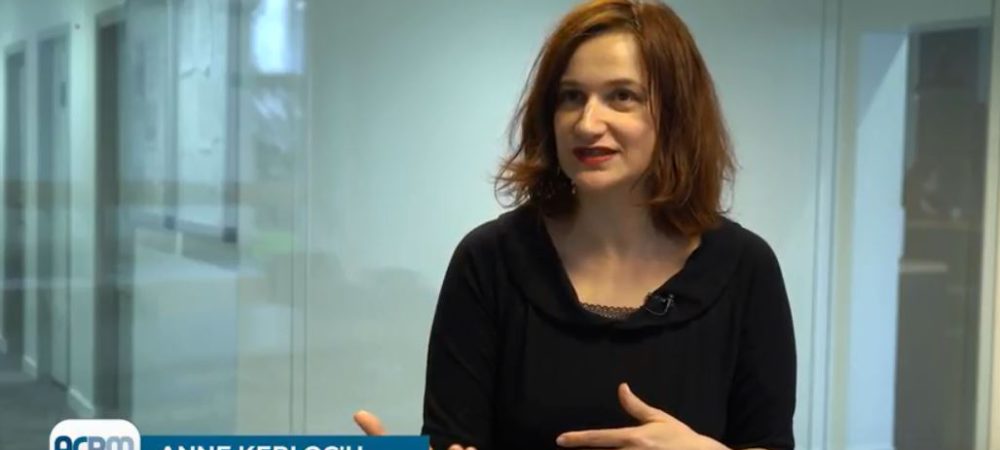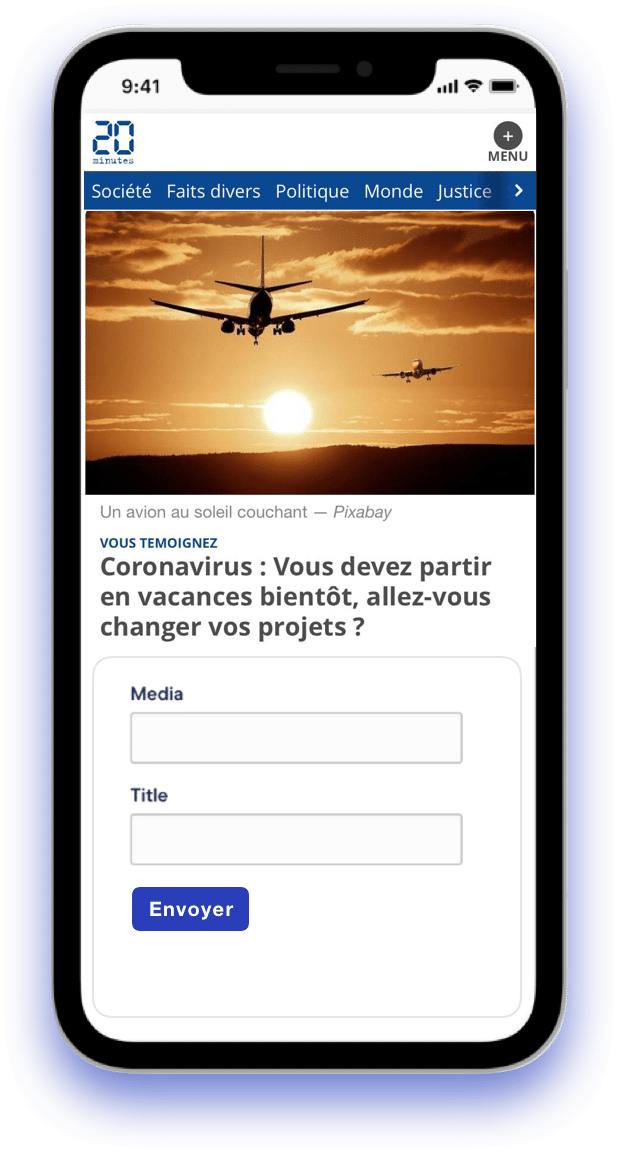20 Minutes France
Coronavirus: Telling the country's stories
What was the starting point?
Since the 25th February 2020, 20minutes.fr have been telling people’s Coronavirus stories. Stories sent directly to them on a variety of related subtopics.
Starting with topics such as people’s travel plans and health professionals’ worries down the line (before lockdowns were even mentioned), they’re now publishing the community’s ideas around how to keep children busy and quarantine mental health and habits. Just to mention a few.
An example of how it worked
For example, from 20minutes’ initial call-out ‘Healthworkers, how do you think the next weeks will pan-out’, they have now identified within their community a
group of healthcare professionals who have shared their contact details with 20minutes in order to communicate with them directly. This community wants to tell the story as it develops, sharing the rapidly changing situation on the ground, and the conditions they are working under, on the trusted 20minutes platform. And 20minutes readers want to hear those stories!
has it been successful?
To date, they have created 92 different call-outs to their audiences and received over 15,000 stories and photos that they have curated into articles on all their platforms.
Although there is a lot of content on social media, these stories have been sent directly to 20minutes. These stories have helped 20minutes build up an understanding of how the virus has been affecting everyone’s lives from day one.
Even though #Covid2019 is a trending phenomenon on social media sites, thousands took the opportunity to send their images and experiences directly to 20minutes.fr via their apps and website using the Contribly tools. All these contributions have built up a list of articles in a timely fashion and helped journalists gain a stronger understanding of the effects of the virus on people around the country.
How did Contribly help?
Contribly is the tool that 20minutes use to carry-out their community building plans. Their aim is to be a platform for their community. To do this, they create the call outs
using Contribly. Bucket loads of audience stories arrive in the Contribly back end. Journalists use the extensive tools to verify the content, manage the data and curate articles for their readers.
With Contribly, 20minutes have become a platform for their audience and are continuously growing their own community on their terms.
In the 12 months, since using Contribly, 20minutes have gathered over 27 500 audience stories. Before, journalists shied away from working with audience content because of the time involved, the data management and the verification issues.
With Contribly’s streamlined workflow it takes a tiny fraction of the time for publications to build and engage readers.
Now, 20minutes are able to gain all the benefits of involving and owning their own community on their own platforms.
Even though #Covid2019 is a trending phenomenon on social media sites, thousands took the opportunity to send their images and experiences directly to 20minutes.fr via their apps and website using the Contribly tools. All these contributions have built up a list of articles in a timely fashion and helped journalists gain a stronger understanding of the effects of the virus on people around the country.
What have been the benefits for 20Minutes.fr?
20minutes have gained new insights but more importantly, new ways to directly communicate with their growing community, which they couldn’t do before.
Thanks to the Contribly tools, 20minutes can use the data they are gathering to contact groups of people and individuals directly. They know their audience better than before and can use that understanding to share honest, authentic stories on their trusted platform.
The 20minutes journalists have instant access to many angles of this fast-developing situation, rapidly turning round first-hand experience stories in real time.
They are doing what journalists should: holding power to account, telling people’s stories and representing people in a trusted way – away from social media, on their own platforms.
What types of call-outs have they created?
All year round, 20 minutes create around 3 call-outs a day to their audience, on all types of topics. They are a platform for their rapidly growing community.
Since the outbreak of Coronavirus some of the subtopics have been:
- Worries about Coronavirus
- How is it affecting people’s travel plans
- Daily life in isolation
- Change of habits around colleagues
- Visiting older family members in care homes
- Medical staff views on how the virus will affect them
- How will parents cope
- Has it affected online dating
- Ideas of entertaining children in quarantine
- Children’s fears after politicians announcements
- Staying at home – mental health
- Experiences for small businesses
- Balcony community support – your photo
"We really want to strengthen the trust in media"

“20 Minutes is deeply committed to engaged and contributive journalism through Contribly’s tools. We really want to strengthen the trust in media.
We want to take the voices of our audience really into account. Audience participation is a very good way to understand them better, their concerns, interests, feelings… In a nutshell, this audience engagement experience is more than a success.
We will pursue and amplify this work and the connection with our audience. We’re proud to promote this humble way of listening and answering!”
Anne Kerloc'h
Editor in chief - 20 minutes france
Thousands of interactions
Over 31 000 audience stories in the first 12 months, since using Contribly
15,000+ Coronavirus experiences
90+ different call-outs to their audiences and received over 15,000+ stories and photos
direct conversations with 119 healthcare workers
Creating call-outs directed to specific workers or groups within society provides 20minutes with lists of on-the-ground verified citizen reports, who are experts in their own fields and want to tell their stories.
The benefits in the long run - 50,000 new points of data
Each call-out provides 20minutes with data that helps them segment their community. Then they have direct access to groups of contributors from various locations, industries, ages, interests and can involve them in all their editorial and sponsored content.
